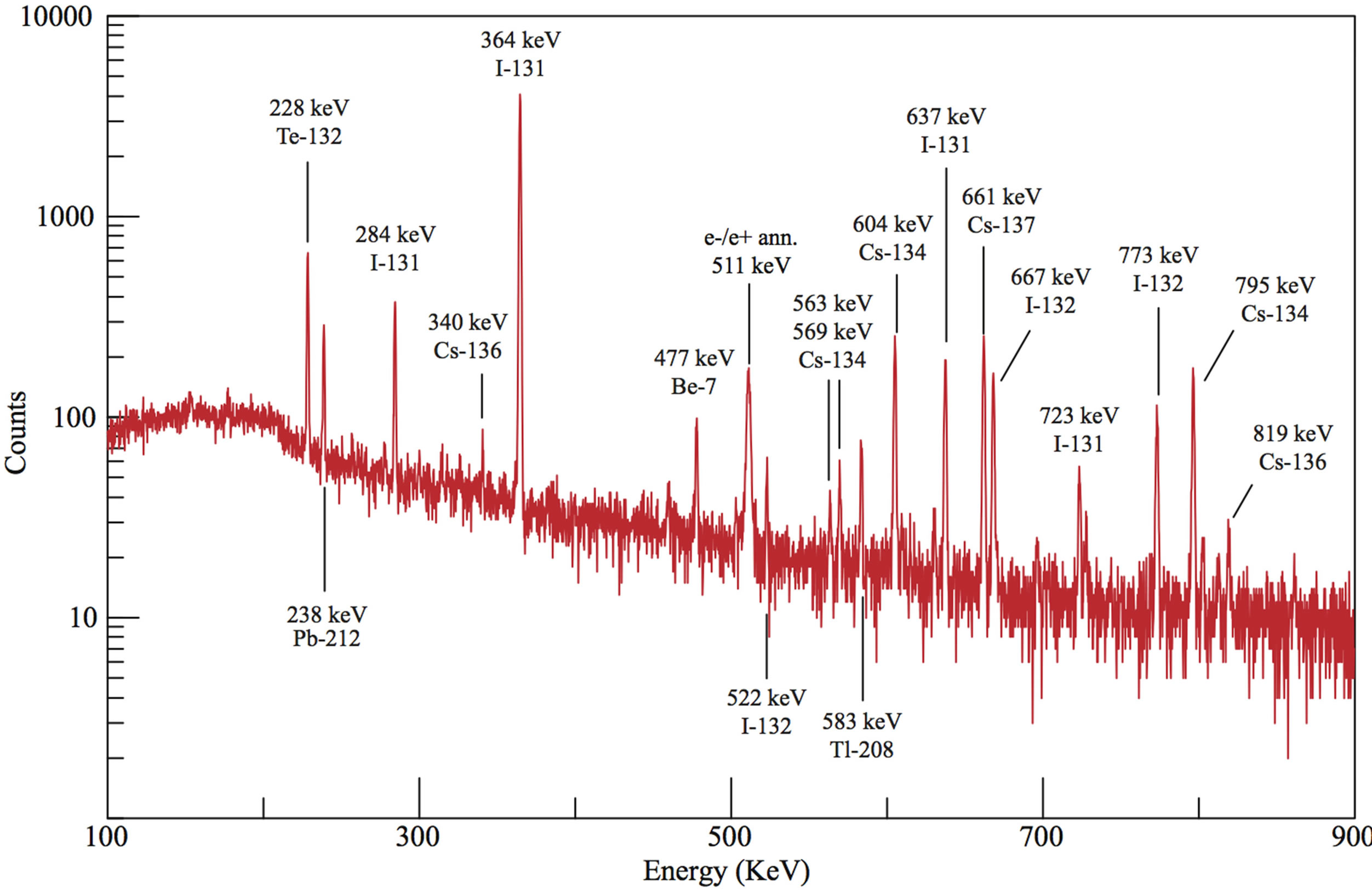How To Detect Reactor Problem (by Gamma spectrum monitoring)
By looking at the spectrum data taken by monitoring posts near Fukushima Daiichi
and seeing many other data, I think we can detect reactor core melt down
by watching the spike of Te132 and then I131 and others (including Cs134, Cs137, etc).
These are not so difficult to catch using DIY or relatively cheap equipments.
How things looks like when the reactor is far from us:
http://file.scirp.org/Html/5-6702195_43366.htm
Te132 peak is 228keV, slightly lower (to the left) than that of Pb212 (Thorium chain).
The main peak of I131 is 365keV. Minor peaks are 284keV, 637keV, 723keV.

And when it's pretty close:
http://pico.dreamhosters.com/img/Misc/Fukushima_playback.zip
Note
What we may see depends on the type of reactor, the type of incident, and so on.
If we get neutron beam, I don't think gamma spectrum monitoring would be very useful.
Also, the environmental radiation level can be influenced by these factors:
- Precipitation (that brings radon progeny down), especially if the air mass above is rich in Uranium chain (Radon and/or progeny).
- Atmospheric stability (that keeps radon progeny down)
- Wind and/or ventilation (that blows away and mixes radon progeny)
- Soil moisture (that slows Radon emanation)
- Diurnal/Seasonal variation (caused by any combination of above and/or wind direction, etc)
- Soil/crust movements like earth quake (that may influence the quantity of radon emanation)
- Presence of Thorium, Uranium, and/or Potassium rich material near by (like rock formation, fertilizer)
- Also building/construction material or any other source of radiation around the detector
http://www.irpa.net/irpa7/cdrom/VOL.2/S2_100.PDF
http://atarazanas.sci.uma.es/docs/articulos/16695306.pdf
http://meetingorganizer.copernicus.org/EGU2009/EGU2009-4619.pdf
http://www.ncbi.nlm.nih.gov/pubmed/17293698
http://geophysics.geoscienceworld.org/content/62/5/1379.abstract
http://www.aarst.org/proceedings/1988/1988_54_Weather_Factors_Affecting_Soil-
http://onlinelibrary.wiley.com/doi/10.1111/j.2153-3490.1966.tb00281.x/pdf
http://nargeo.geo.uni.lodz.pl/~meteo/ap/pdf/2010_Nukleonika.pdf
http://www.radonleaders.org/sites/default/files/Ion,%20Radon.pdf
We CANNOT tell nuclear contamination from these unless we carefully examine each case with appropriate equipment(s) and procedure(s).
Inexpensive (starting around $160 USD, but more sensitive models from $500 would be better) gamma spectrometry devices can be very handy for checking if the variation of radiation dose is of natural cause or not.
Examples:
Armadillo Detector
http://www.sovtube.com/en/dosimeters/823--gamma-scintillation-detector.html
http://www.sovtube.com/en/dosimeters/834-naitl-1640-mm-gamma-spectrometer-for-iphone.html
http://www.ebay.com/usr/fuijapanshop
http://www.gammaspectacular.com/
Polimaster Pm1703
Polimaster Pm1406
Imetry Detector
Please note that simple Geiger counters or scintillation counters cannot show you the spectrum, although they can help you to detect the variation.
Also, common Geiger counters and scintillation counters with small crystal aren't sensitive enough to detect changes before it's too late.
I recommend at least 3cc crystal size (for handheld/portable detectors) and ideally more than 2 inch crystal for more sophisticated investigation.
Also, more sensitive equipments help us to learn about spectrum much easier and faster as things become visible quicker.